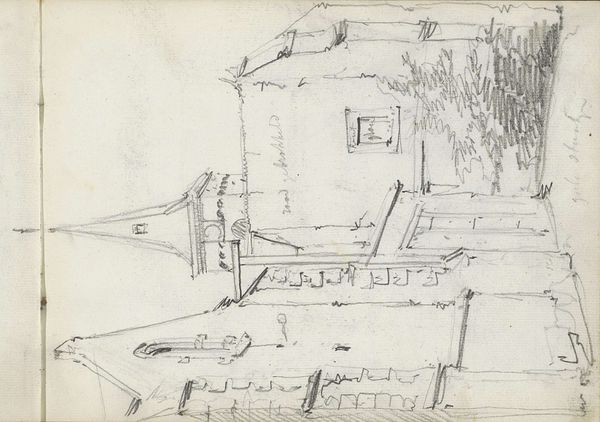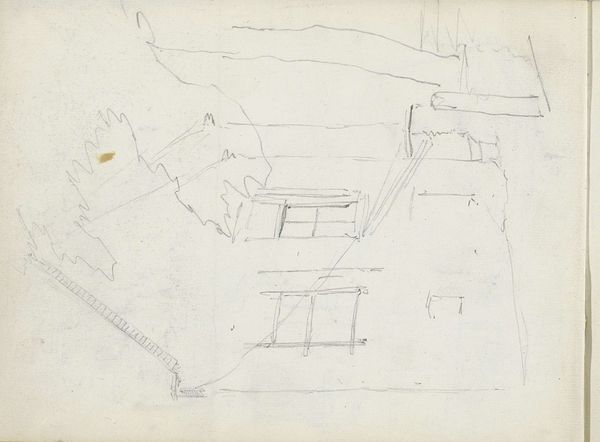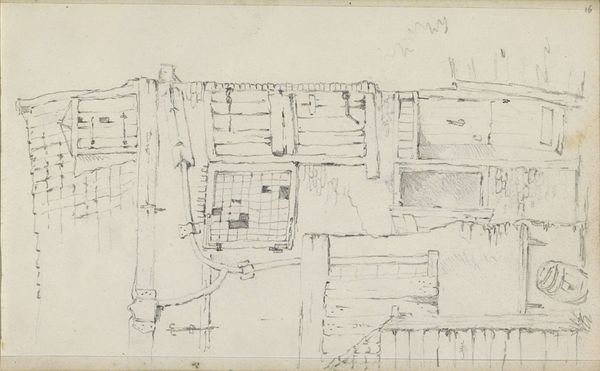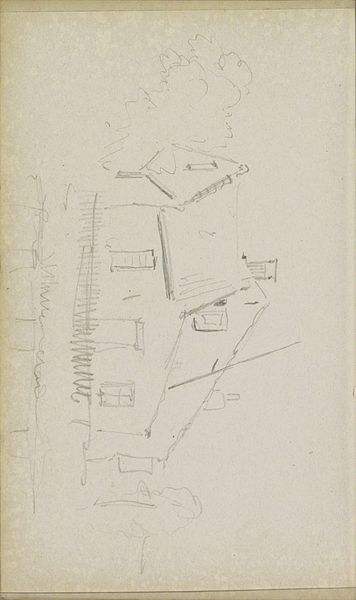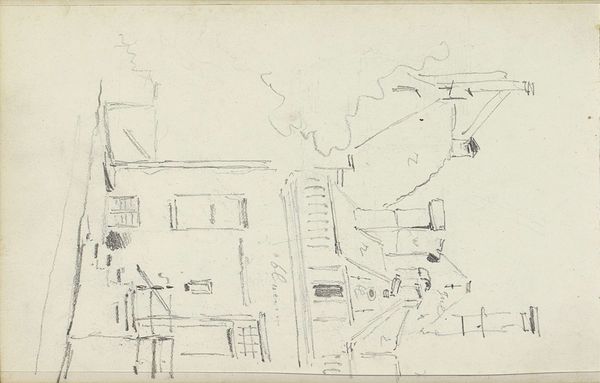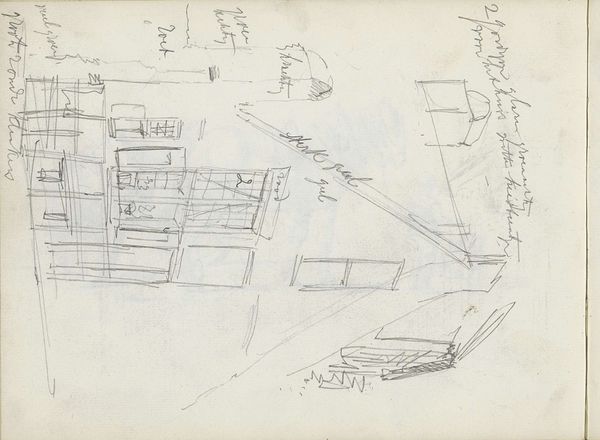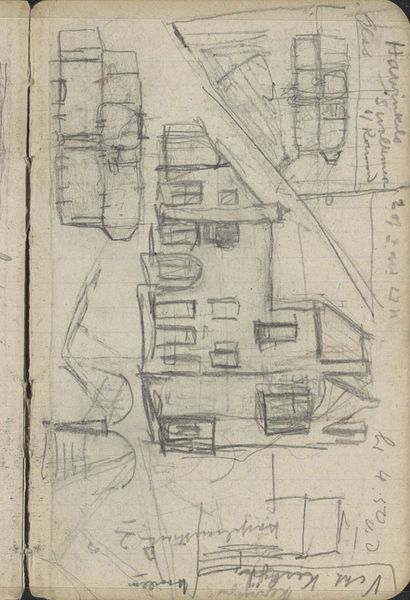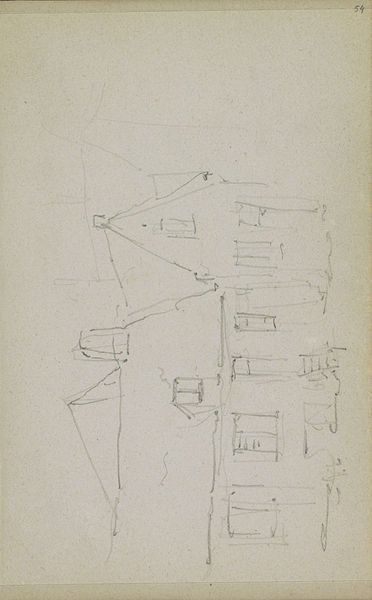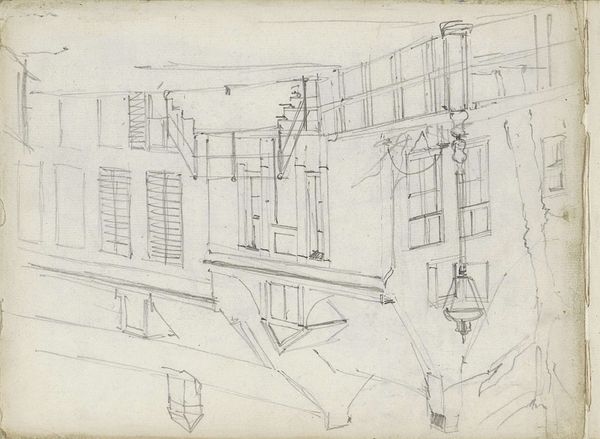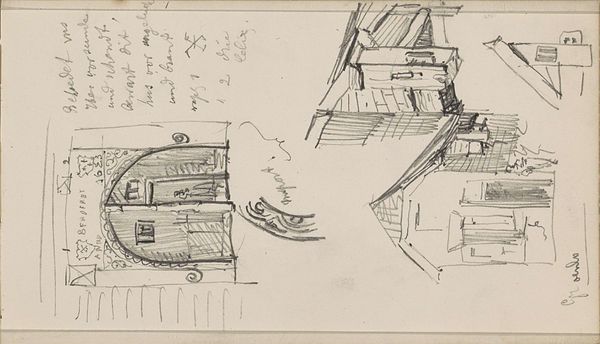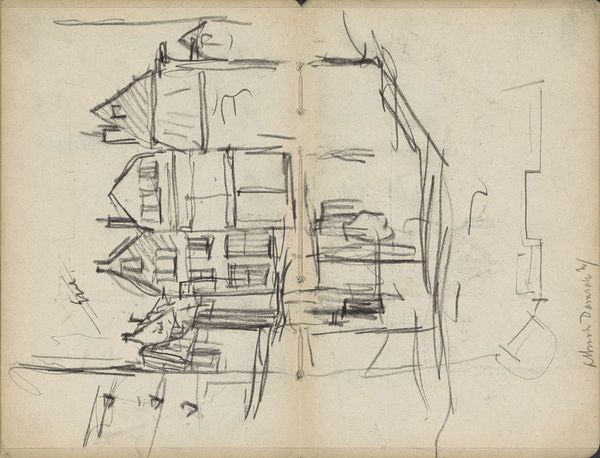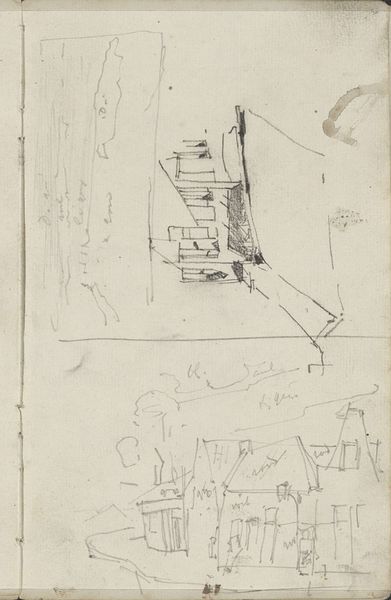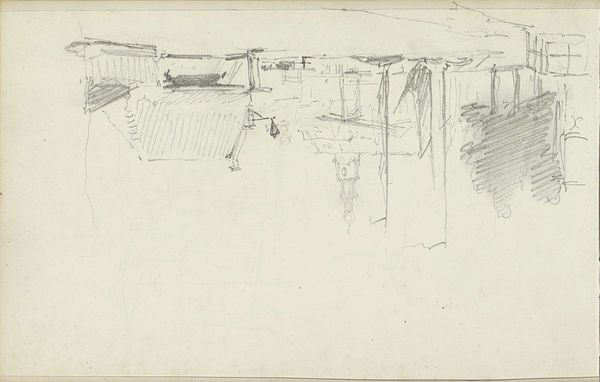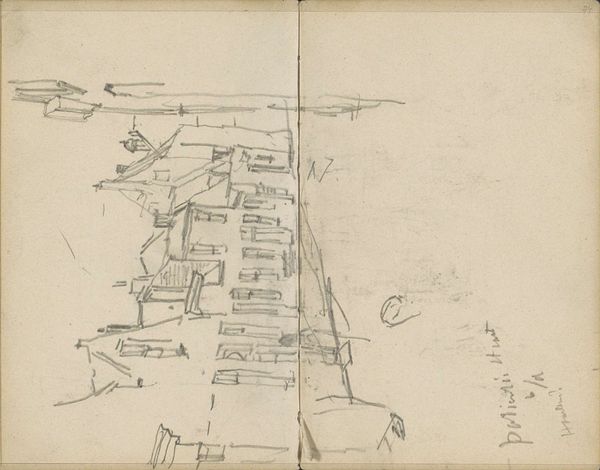
drawing, pencil
#
drawing
#
dutch-golden-age
#
landscape
#
pencil
#
cityscape
#
realism
Copyright: Rijks Museum: Open Domain
Curator: Welcome! Today, we’ll be looking at a drawing titled “Scherpenhoek te Culemborg” by Willem Koekkoek, made sometime between 1849 and 1895. It’s currently held in the Rijksmuseum. Editor: My first impression? It's a quick sketch, full of light, but something about the angular shapes gives me a feeling of quiet confinement. It’s as if the walls are holding secrets. Curator: That sense of quiet is interesting. Koekkoek was known for his idealized cityscapes, often evoking a nostalgic view of the Dutch Golden Age. So, let's consider what it means to capture a cityscape through rose-tinted glasses in a time of great social and political upheaval. What’s deliberately left out of the frame? Editor: Hmm, that makes me think... perhaps the confinement is not just architectural but also social. He is capturing a moment that may not be entirely honest but creates a sense of calm... which is strange when the medium looks frantic to my eyes. You feel that frenetic energy within a very stilled place. Curator: Exactly! The pencil lines, the realism – they serve a purpose. Dutch Golden Age landscapes served to project power and a sense of prosperity, yet the decision to sketch this in pencil creates a sort of removal from that reality, highlighting perhaps what is absent from that idealized vision. Who exactly benefited from this projected image of society and whose stories are we not seeing? Editor: Fascinating. It really brings to mind the ongoing debates around historical narratives, and how those with the power get to define the 'truth' of a period. Art doesn’t happen in a bubble. I still feel the mood; looking at it after understanding that there are stories missing, my original perception turns slightly unsettling. Like I'm complicit in keeping something obscured. Curator: Precisely. By acknowledging the social dynamics, we create an informed, critical view of Willem Koekkoek’s intention during that era. It also pushes the modern audience to delve more critically into Dutch landscape as it relates to power dynamics, historical movements, gender studies, or economics. Editor: I love how art continues to provoke and prod! Willem Koekkoek’s work is indeed simple in materials, yet, as we unveiled here, has rich potential to be more than meets the eye.
Comments
No comments
Be the first to comment and join the conversation on the ultimate creative platform.
